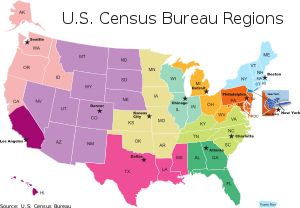| Government Accountability Office (Photo credit: dcdan) |
In breaking news, the Government Accountability Office has issued a report critical of the definitions states are allowed to use in determining whether racial or ethnic groups are overrepresented in special education. It has long been the contention of certain racial and ethnic groups that their kids are included in special ed in disproportionate numbers.
In 2010, states required about 2 percent of all districts to use Individuals with Disabilities Education Act (IDEA) funds for early intervening services to address the overrepresentation of racial and ethnic groups in special education. Based on definitions states individually developed to measure this overrepresentation-- referred to in IDEA as significant disproportionality--356 districts were required to provide services. Half of these districts were clustered in five states and 73 were in Louisiana alone. States have used flexibility provided by Education to develop their own definitions of significant disproportionality and GAO's analysis of 16 selected states found wide variation in definitions. Further, GAO found that the way some states defined overrepresentation made it unlikely that any districts would be identified and thus required to provide early intervening services. Nebraska and Louisiana illustrate differing outcomes that can result from different state definitions. In Nebraska, one of 21 states that did not require any districts to provide services in 2010-11, racial and ethnic groups must be identified for special education at a rate three times higher than for other groups for 2 consecutive years. In contrast, racial and ethnic groups in Louisiana districts must be identified for special education at twice the rate of other students in any year. GAO's analysis found if Nebraska had used Louisiana's definition, Nebraska districts may have been required to provide services and, conversely, Louisiana might have identified fewer districts under Nebraska's definition.
The GAO recommends that states be required by the federal Department of Education to use a uniform definition.
You can see a summary of the report here. You can read the entire 44 page report here.






































